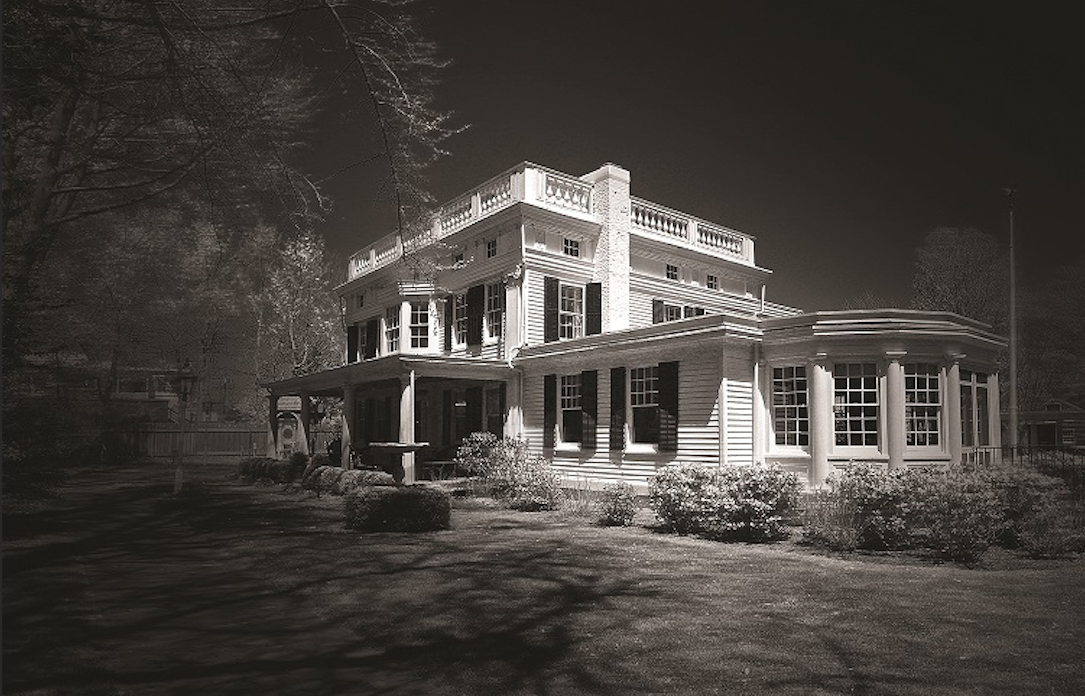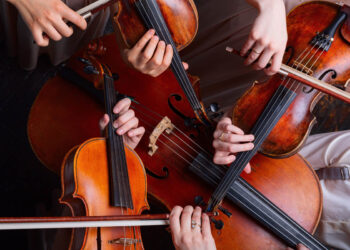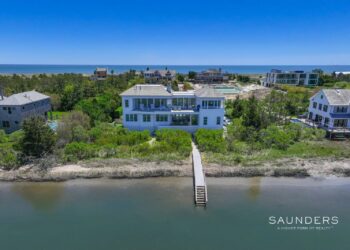
Last Saturday night my family joined a ghost-hunting expedition at the Southampton History Museum’s Rogers Mansion, conducted by the Long Island Paranormal Investigators. Eleven of us joined the investigation team for the first of four sessions taking place that night. Staff at the mansion, which serves as the office of the History Museum, have long reported strange sounds and occurrences which made them wonder if the building could be haunted. So they called in the LI Paranormal Investigators and it turns out the house probably is haunted by spirits. Two members of the ghost hunters team, Connor Flanagan and Liana Mizzi, both work at the Rogers Mansion. The investigators continue to investigate the site, and now the public can join them.
We began seated around a table in the dining room for an orientation. The lights were turned off–we’d be in the dark–and team members explained how they work and demonstrated several of the devices they use to capture sounds and, hopefully, connect with spirits that are present. The device they use to capture voices is called the PSB-7; it scans am/fm frequencies in the hope that a ghost can manipulate radio waves to more easily communicate with the hunters. They also had a Rem Pod, a KII meter, motion sensor, and a thermometer in hopes they could make contact with a ghost. They related experiences they’ve had in the house, which was built c.1843 (more on this later).
Then we split into two groups, accompanied by investigators, to explore the house; one group started downstairs and our group began upstairs where the bedrooms are. Team members had small lights to use so nobody fell or got lost or separated from the group. We wandered from room to room; in each room there was an investigator to tell us whose bedroom it was.
In one of the rooms I noticed a small green light on the bed and asked what it was. Investigator James Saccone explained that the device is an electrosmog meter which detects radio waves, so if a ghost is trying to use them to speak it will light up, but not produce the actual sound. A device underneath it, an echo vox, can pick up spoken words, from a spirit/ghost that might be present. The team takes the devices back with them to study closely for sounds that were picked up from spirits who once lived in — or spent time in– the house.
The investigators explained that we may not hear a voice on the night we visit, but when they replay the tapes later they can pick up voices, snatches of words, and other sounds which they can analyze. As we wandered the halls and bedrooms the investigators asked questions of the spirits — who they were, their name, if they had lived in the house or visited. We did hear fragments of sound on some of the questions, but they didn’t resolve into clearly spoken words. The investigators would go back to determine what might be captured on their equipment that could be picked up with further analysis.
The two groups changed places and we headed downstairs to the living and dining rooms. The scariest part of the tour was the basement. It’s very old and as you might imagine, full of all kinds of stuff that has accumulated over the years. A toy merry-go-round on the corner of a shelf was especially creepy, and our guide told us about a time it was seen to turn by itself. There is also a ghost who inhabits the basement, an old soldier who gave his name as Sarge and who makes his presence known (luckily for me, who was not eager to encounter a ghost, he did not do so for us). Sometimes he likes to brush against a woman’s skirt. Our guide recounted that on one tour as he was explaining that, a woman on the tour wearing a long, loose skirt felt it swing out. She ran straight upstairs and out of the house. Scary.
We had no dramatic encounters on our tour (thankfully, for me) and will be awaiting word from the investigators on whether they detected any ghosts that night.
For more info, visit https://www.southamptonhistory.org/ghosts












